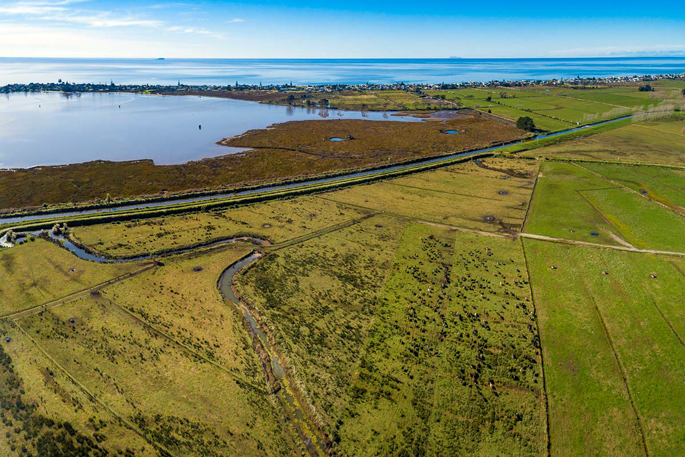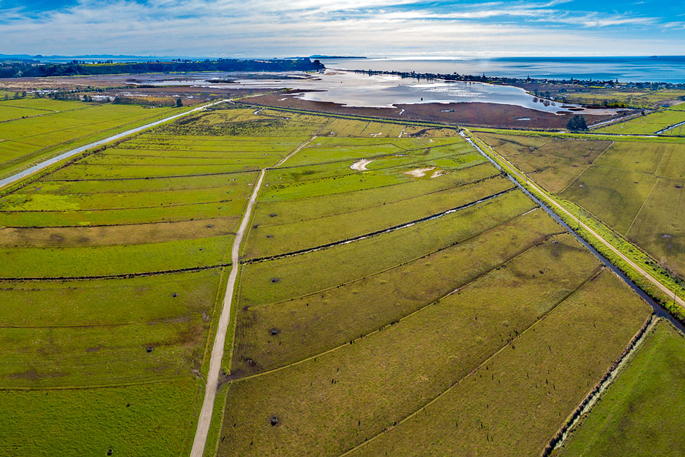Research is underway to determine how salt marshes and mangroves could protect Bay of Plenty’s coastline from climate change – and how a ‘resilience credit’ could be bought and sold in future to encourage wetland restoration.
The project at Waihī Estuary is being led by The Nature Conservancy Aotearoa New Zealand - TNC NZ, the local arm of a global non-profit organisation that is developing a methodology to measure the resilience benefits of coastal wetlands, and gather data on blue carbon (the carbon stored in coastal and marine ecosystems).
TNC NZ’s Nature-based Solutions Project Manager, Olya Albot, says the ultimate goal is to develop the world’s first ‘resilience credit’, similar to a carbon credit, that encourages action to restore wetlands, and could also be traded to help offset an organisation or individual’s carbon footprint and help local communities fund climate change adaptation.
“We’re investigating coastal resilience because these environments are becoming more exposed to the impacts of climate change, such as increased storm surge, cyclones and sea level rise in the long-term. Coastal land is becoming more vulnerable as time goes on,” says Olya.
Potentially, money earned from trading resilience and/or blue carbon credits in a possible future international market could then be put towards creating or restoring more wetlands, enabling Kiwi landowners to move economic activities away from vulnerable land, earn ongoing income, and protect coastal sites from climate change.
The blue carbon coastal resilience mapping project will receive $35,000 from BayTrust to help quantify what impact wetlands could have on flooding and storm surges near Waihī Estuary.
Two-dimensional hydrological models are being used to investigate how water would potentially flow over the area with or without salt marshes and mangroves.
“We’re trying to quantify exactly how much water wetlands could hold back in the event of a storm surge, as well as how many hectares of land, how many people, and the value of infrastructure that could be protected by wetlands,” she says.
 Blue carbon research is underway at this site near Waihi Estuary. Photo: Andy Belcher.
Blue carbon research is underway at this site near Waihi Estuary. Photo: Andy Belcher.
The research is being carried out on a 30ha site of low-lying farmland which is jointly owned by Toi Moana Bay of Plenty Regional Council and iwi collective Te Wahapū o Waihī.
Their aim is to improve the ecological health of Waihī Estuary by redeveloping the wetland area to treat agricultural drainage water from adjacent dairy farms, as well as improve indigenous wetland habitat and biodiversity.
Olya says Bay of Plenty is an ideal case study environment because there is almost 4000ha of land that sits below the mean high water spring inundation levels – meaning there’s lots of land suitable for wetland restoration.
“We are extremely grateful to BayTrust for their support which will help us achieve this coastal resilience modelling and communicate to Bay of Plenty communities what the coastal resilience benefits of these wetland restoration projects might be in the future.”
BayTrust CEO Alastair Rhodes says the organisation supported TNC NZ a few years ago with a grant to carry out their initial pre-feasibility assessment.
“We’re excited to continue this journey alongside TNC NZ who are now gathering hard data at Waihī Estuary," says Alastair.
“In New Zealand over 90 per cent of freshwater and coastal wetlands have been degraded and drained due to urban expansion and conversion to agriculture.
"Restoring wetlands will benefit people, the climate, biodiversity, and provide positive social and cultural outcomes as well, so we’re pleased to support this vital research.
“The potential for companies or individuals being able to buy and sell resilience and blue carbon credits is an exciting prospect, and this research will support the possible establishment of a robust international trading market in this space.”
TNC NZ is also working with the Ministry for the Environment to assess the legal, policy and market considerations required to establish a national blue carbon credit scheme focussed on coastal wetlands.
 Waihi Estuary future wetland site.Photo: Andy Belcher.
Waihi Estuary future wetland site.Photo: Andy Belcher.



4 comments
Hmmm
Posted on 17-02-2024 14:48 | By Let's get real
Well isn't that interesting.
I was under the impression that decaying organic matter produces methane (which of course the Greens want the cows to stop producing) so isn't a marsh or swamp just a huge area of constantly decaying and dying organic matter.
Interesting then, that I heard from a farming correspondent that it is believed that wetlands and swamps in NZ are contributing about 40% of our 0.18% of harmful climate changing emissions as methane.
Lies, damned lies and politicians, maybe.
Hmmm
Posted on 17-02-2024 14:51 | By Let's get real
Should have been more accurate perhaps...
Lies, damned lies and statistics (Mark Twain)
My version is a lot more fitting though.
Do Whatever You Like
Posted on 17-02-2024 17:09 | By Yadick
The natural phenomenon of climate change is going to happen regardless.
Ummm
Posted on 18-02-2024 09:04 | By SonnyJim
There are also figures for wetland being far more productive than pasture because they are the nursery areas for much sea life, along with associated mud areas for shellfish.
Nice to see the new farm ponds Pongakawa/Maniatutu are now well established.
Leave a Comment
You must be logged in to make a comment.